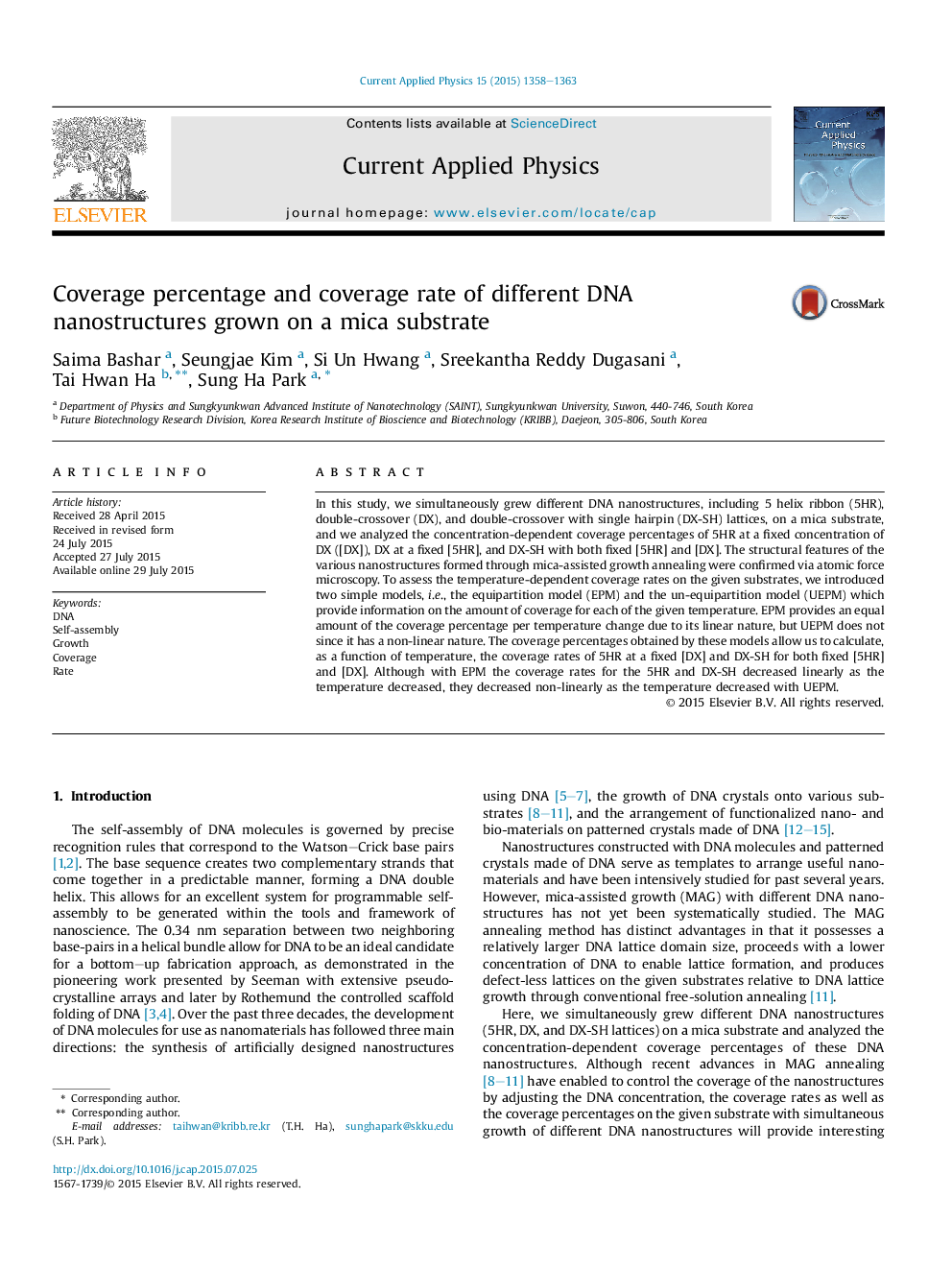| Article ID | Journal | Published Year | Pages | File Type |
|---|---|---|---|---|
| 1785398 | Current Applied Physics | 2015 | 6 Pages |
•We grew DNA nanostructures, and analyzed the concentration-dependent coverages.•To assess the coverage rates, we introduced two simple models.•The coverage percentages allowed us to calculate the coverage rates of DNA.
In this study, we simultaneously grew different DNA nanostructures, including 5 helix ribbon (5HR), double-crossover (DX), and double-crossover with single hairpin (DX-SH) lattices, on a mica substrate, and we analyzed the concentration-dependent coverage percentages of 5HR at a fixed concentration of DX ([DX]), DX at a fixed [5HR], and DX-SH with both fixed [5HR] and [DX]. The structural features of the various nanostructures formed through mica-assisted growth annealing were confirmed via atomic force microscopy. To assess the temperature-dependent coverage rates on the given substrates, we introduced two simple models, i.e., the equipartition model (EPM) and the un-equipartition model (UEPM) which provide information on the amount of coverage for each of the given temperature. EPM provides an equal amount of the coverage percentage per temperature change due to its linear nature, but UEPM does not since it has a non-linear nature. The coverage percentages obtained by these models allow us to calculate, as a function of temperature, the coverage rates of 5HR at a fixed [DX] and DX-SH for both fixed [5HR] and [DX]. Although with EPM the coverage rates for the 5HR and DX-SH decreased linearly as the temperature decreased, they decreased non-linearly as the temperature decreased with UEPM.
